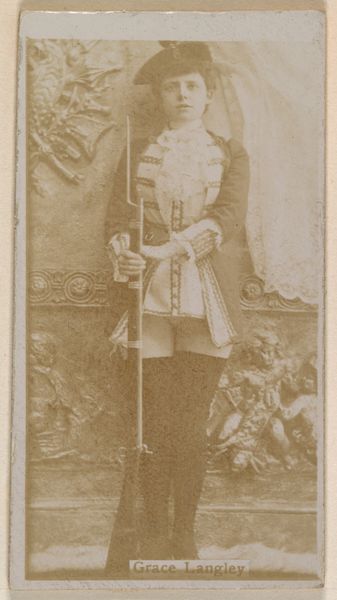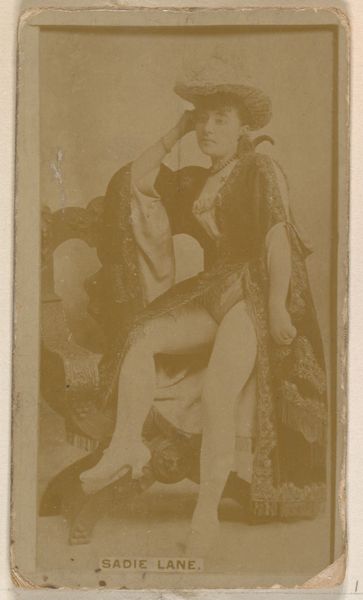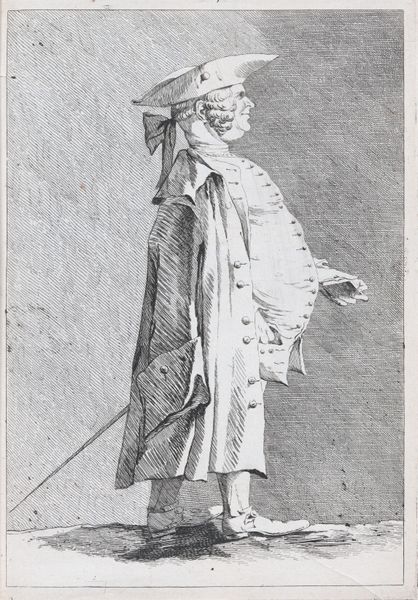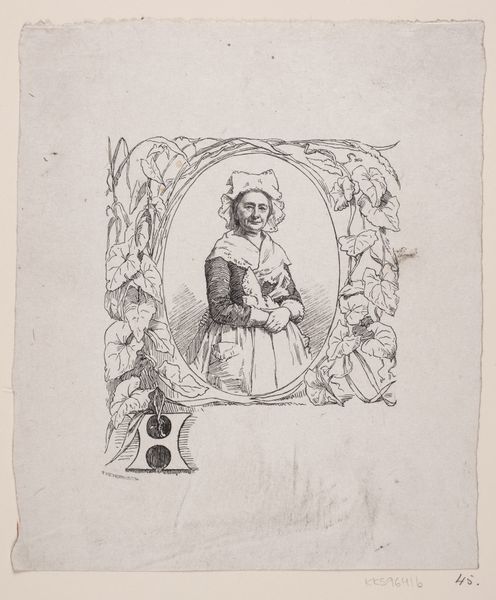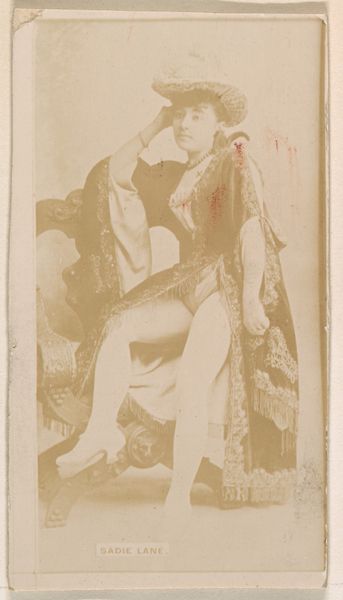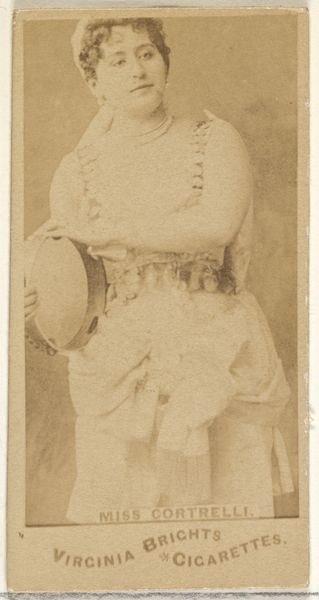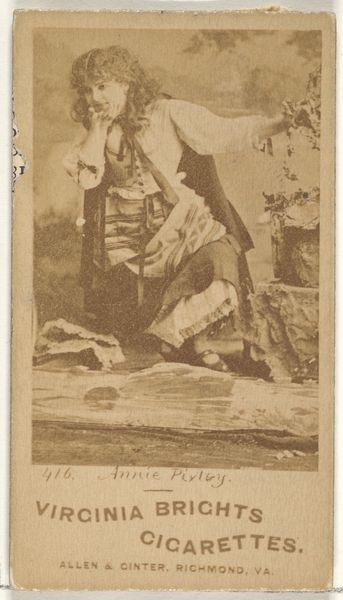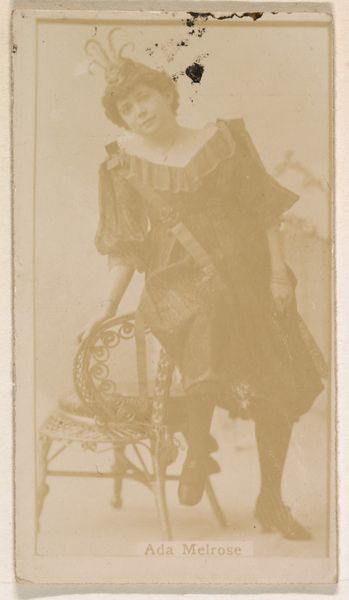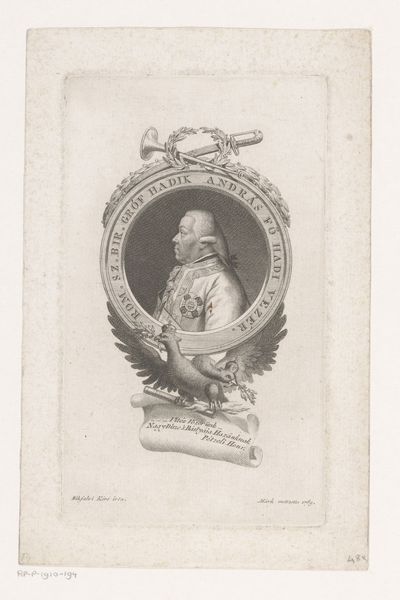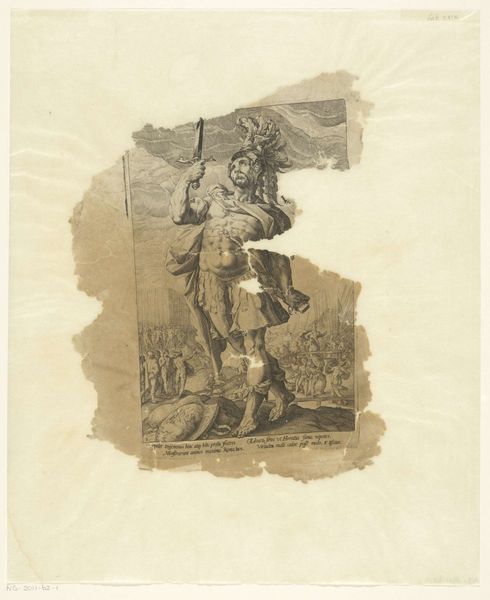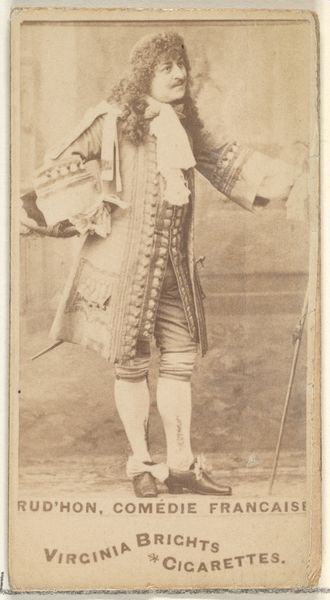
Grace Langley, from the Actresses series (N245) issued by Kinney Brothers to promote Sweet Caporal Cigarettes 1890
0:00
0:00
print, photography
#
portrait
# print
#
photography
Dimensions: Sheet: 2 1/2 × 1 7/16 in. (6.4 × 3.7 cm)
Copyright: Public Domain
Curator: I find myself drawn to this faint sepia portrait of Grace Langley, dating back to 1890, which was included in the "Actresses" series (N245) that Kinney Brothers used to promote their Sweet Caporal Cigarettes. What do you make of it at first glance? Editor: There’s a distinct formality, a sense of constrained performance, and even considering its historical context and marketing purpose, there’s a visible stiffness. She seems to be trapped by the visual culture that this piece reinforces. Curator: These actor portraits, commonly issued in series as trade cards, function almost like votive offerings to celebrity. They elevate the individual to an idealized representation while reinforcing the cultural values the figure embodies. Note how the soft focus gives an otherworldly aura that's far from accidental. Editor: True, but who exactly benefits from this elevation? The image feels emblematic of the gaze directed at women, particularly performers, during this period. It serves as an early model for manufacturing celebrity through limited, controlled narratives. Notice her almost mournful gaze... It’s suggestive, and feels almost pleading. Curator: Well, her somewhat direct gaze certainly suggests an acknowledgement of her audience. The gesture of holding that staff or riding crop has echoes of ancient representations of authority, and contrasts sharply with the dainty, elaborate costume she's wearing, drawing from a deep reservoir of symbol. Editor: That object definitely demands attention—it does seem to hint at agency and an appropriation of masculinity, particularly given the elaborate decoration of her outfit that screams "femininity". Curator: Do you think it would be right to describe this as a moment of subversive agency, or rather an element deliberately employed as part of her overall visual performance for a Victorian public that consumed celebrity like this on a regular basis? Editor: It's more complicated than that, perhaps both, inseparably intertwined. It provides a visual fracture in an otherwise seamless portrait of constructed feminine celebrity in the 19th Century. But, considering this visual document existed solely to reinforce economic power structures, maybe there are other perspectives at play here that could illuminate its legacy? Curator: Maybe. But by situating the discussion inside capitalism and celebrity alone, we might miss deeper threads. But it does raise a powerful point to examine these images within an even broader range of intersecting cultural considerations. Editor: I agree that is a discussion for further exploration beyond a simple dialogue—one of the compelling issues of the image that can be pursued, and I think that provides closure to my inquiry into Grace Langley’s cultural portrait. Curator: Indeed. Looking at it, I am struck by how even these ostensibly disposable, mass-produced items hold complex cultural weight across the ages.
Comments
No comments
Be the first to comment and join the conversation on the ultimate creative platform.
